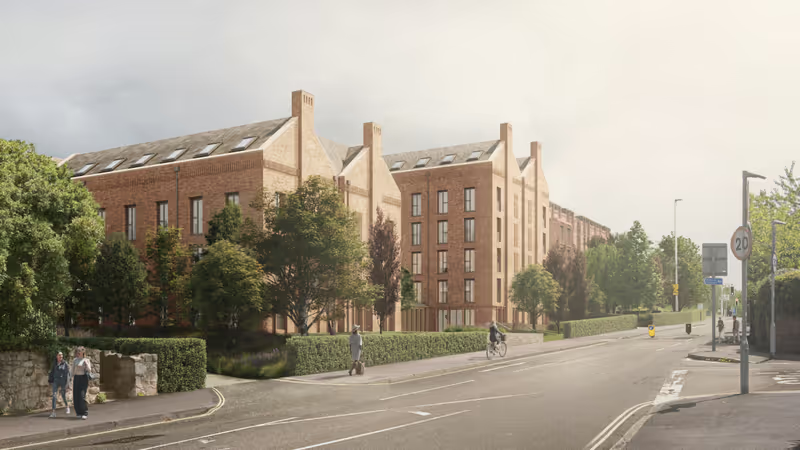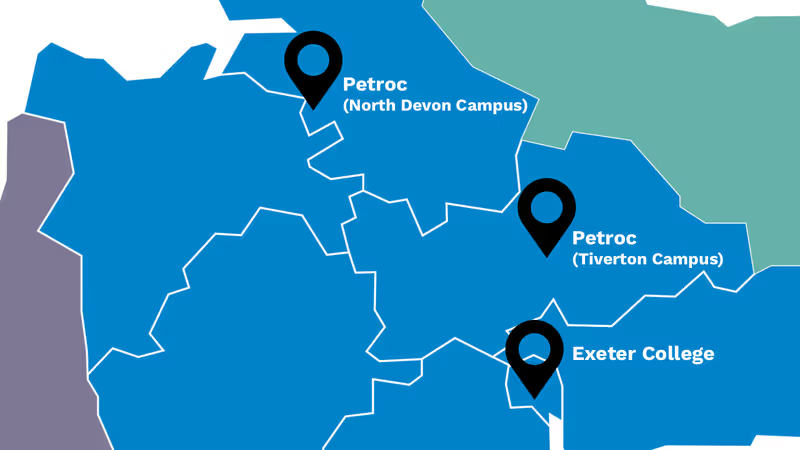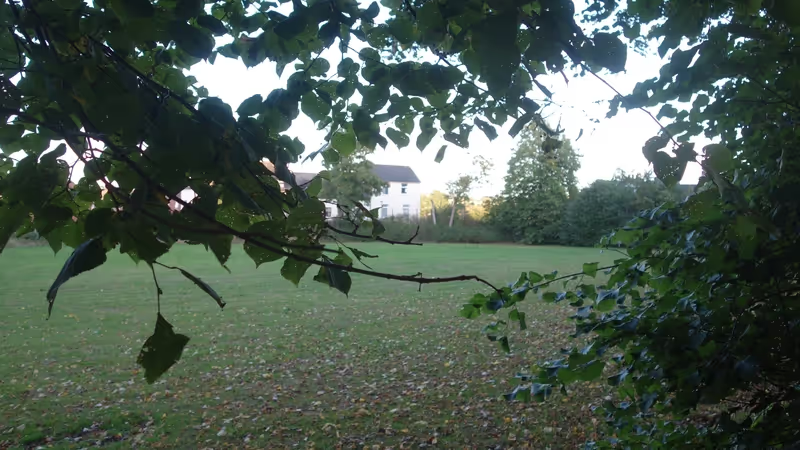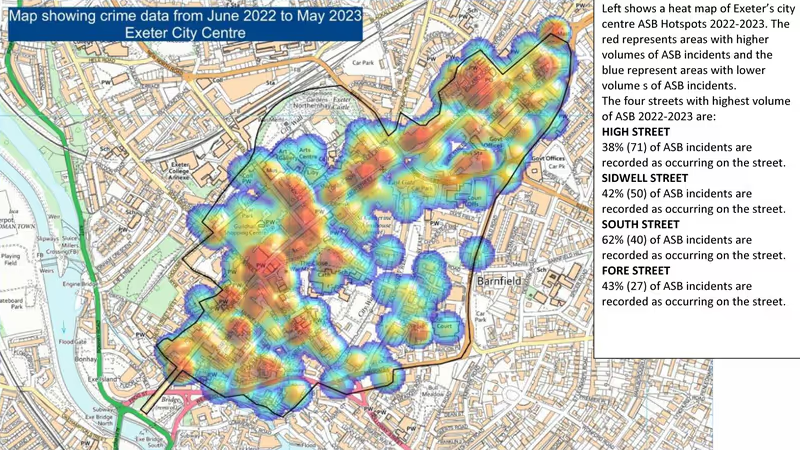In what may be an indication of development decisions to come, Exeter City Council planning committee approved plans for 40 new “zero carbon” homes on Monday night despite previously deferring the decision due to concerns about the development’s impact on congestion levels and the low proportion of affordable housing included in the scheme.
The proposal to develop the 3.9 acre greenfield site between Pulling Road and Church Hill in Pinhoe initially included 100 car parking spaces, but a council report recommended a reduction to a total of 96 spaces, including two car ports and fourteen garages which Devon County Council, acting as local highway authority, does not count as parking spaces.
Were the 12,000 homes envisaged as part of the “Liveable Exeter” development plan delivered with the same ratio of 2.4 car parking spaces per household an additional 28,800 cars would join the city’s roads.
The Pulling Road proposal also initially included six affordable homes, just 15% of the total, but was amended to include six units for social rent and four for discounted market sale. Exeter City Council’s policy is that 35% of new developments should be affordable but the ten units included in the revised proposal amounted to only 25% of the total.
However the council’s inability to demonstrate a five year supply of deliverable housing sites means that a presumption in favour of development applies. Following viability assessment which included consideration of the higher construction costs of high-tech energy efficient housing and the presumption that developers of such dwellings should expect a 20% gross profit margin, council officers recommended approval of the plans.
Officers acknowledged that this form of development “results in a reduction in affordable housing provision” but said this was “an acceptable compromise which will result in both additional dwellings to meet the five year housing supply and a housing product which meets the overall aims of the council commitment toward being carbon neutral.”
 Pulling Road development site aerial photo
Pulling Road development site aerial photo
City councillors nevertheless questioned the plans, expressing surprise that the county highways authority had not objected in a consultation reply which included a transport assessment that predicted a vehicle arriving at or leaving the site every 75 seconds during peak times.
A statement supporting the application said the new housing would generate “one vehicle trip every two minutes travelling in or out of the site on average”, a total of 720 movements a day which it described as “a minimal volume of vehicle flows”.
But the county council simply requested a £130,000 contribution from the developer towards its Pinhoe area access strategy in response.
Councillor Amal Ghusain said: “I don’t understand the logic behind highways allowing this to go ahead” and council leader Phil Bialyk said: “I don’t think it is satisfactory and will increase traffic quite a lot. I don’t get how highways have reached the decision that it is OK.”
Local residents also expressed concern at the impact of increasing vehicle congestion in the area, identifying “tremendous pressure” on existing roads and at pinch points including Cheynegate Lane and the junction of Church Hill and Harrington Lane.
 Pulling Road development site location plan
Pulling Road development site location plan
Local councillor Duncan Wood said Pinhoe had seen many developments which might not have had significant impact on traffic on their own, but which had aggregated to the point where traffic flow had increased significantly.
He said: “This seems to be a development to be achieved at any cost, irrespective of whether it can be safely accessed or the traffic can be absorbed on a network already beyond capacity.”
Fellow ward councillor Trish Oliver added: “We suffer from increasing traffic congestion and decreasing air quality and this will be exacerbated by all the other developments.”
The adjacent Home Farm development of 120 houses is under construction, and 380 more homes are due alongside the proposal site at Pinhoe Quarry.
But Rachel Sutton, city council portfolio holder for climate and culture, said that while the committee might disagree with the highways advice, there weren’t any reasons to refuse the scheme on such grounds.
She said: “There is a lot to like about this. The quality of the houses is commendable and I like zero carbon homes as that is what we need. This is finely balanced but I am broadly in favour.”
Councillor Keith Sparkes added: “We need the zero carbon homes in Exeter. Opposing on the traffic isn’t going to work, so this should go ahead.”
 Pulling Road development site plan
Pulling Road development site plan
When the planning committee considered the application in February, Pinhoe councillor David Harvey pointed at the nearby bus service and cycle route and suggested the site was ripe for a car-free development.
And the developer’s application statement said: “The site is surrounded by an excellent pedestrian and cycle network which links the site with the neighbouring employment and residential areas.
“The city centre can be easily reached by cycle trips via a network of cycleways and advisory cycle routes.
“There are seven bus stops located within a 450 metre radius of the site which support a total of five different bus services.”
But Tom Carr, co-founder of developer Verto Homes, said making the site car-free would hinder sales.
“When spending money on a property, people want to be able to store a car. As much as we want to push towards zero carbon, we cannot dictate how people live their lives.
“We aim to build homes in a sustainable and environmentally friendly way. If Exeter is to lead the way and be carbon neutral, then supporting a zero carbon development is essential.”
 Pulling Road development design illustration
Pulling Road development design illustration
The UK Green Building Council’s framework outlines what net zero carbon means in terms of building construction, operation and whole life emissions.
It says that the production and construction of residential buildings accounts for more than half their carbon impacts, and that carbon offsets are necessary to mitigate both direct and indirect emissions from their development and use.
And UK Advertising Standard Authority guidance requires that carbon reduction claims must be based on the full life cycle of products unless they state otherwise, and must make clear the limits of that life cycle.
The developer’s application statement says that the development could be Exeter’s “first genuine zero carbon housing scheme”.
But externalities such as emissions from motor vehicle journeys, remotely-generated electricity and the energy embedded in construction materials and their use all contribute to the overall impact of any development.
The application statement does not mention these impacts nor whether they will be offset.
And while infrastructure to enable the installation of electric vehicle charging points will be included in the development, there is no commitment to install charging points, nor any restriction on combustion engine-powered cars parking in the development’s 96 spaces.
The developer’s agent described the suggestion by a planning committee member that the provision for charging points should be increased as an “over-specification”, partly because it would increase demand on the local electricity distribution grid.
As transport is Exeter’s largest source of carbon emissions, and vehicle congestion its bane, permitting developments which provide 2.4 car parking spaces for every household is neither compatible with the city’s vision for the future nor its carbon reduction plans.
And if private property development profits necessarily make energy efficient housing unaffordable, the city faces many prospective decisions in which it will have to choose whether schemes such as this do more to help meet its overall aims than hinder them.
As councillor Greg Sheldon said when the planning committee considered the Pulling Road application in February, with some houses expected to sell for more than £500,000: “It is no good saying we are getting zero carbon homes for the masses, if the masses can’t afford them.”
The deferred planning decision was approved by nine votes to three, with one abstention.










